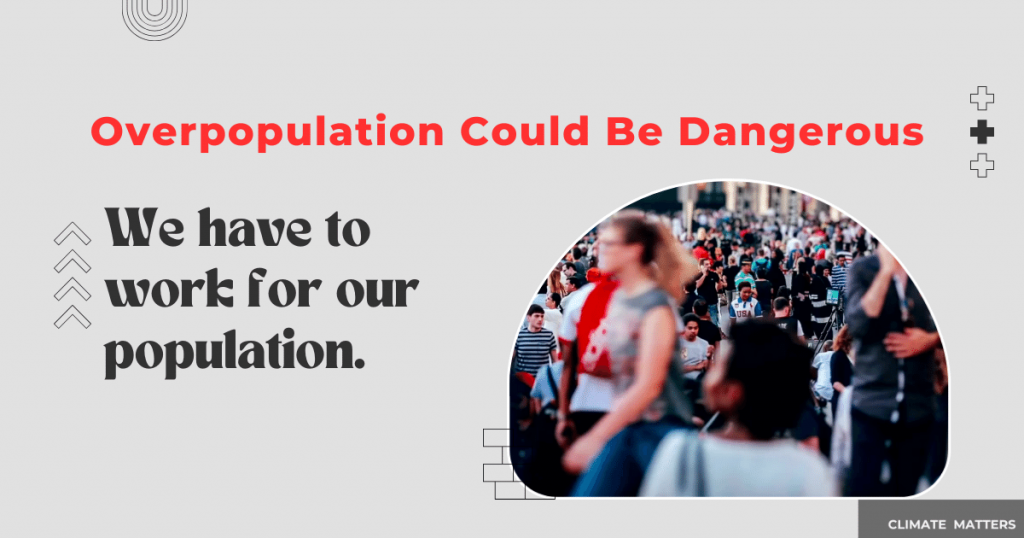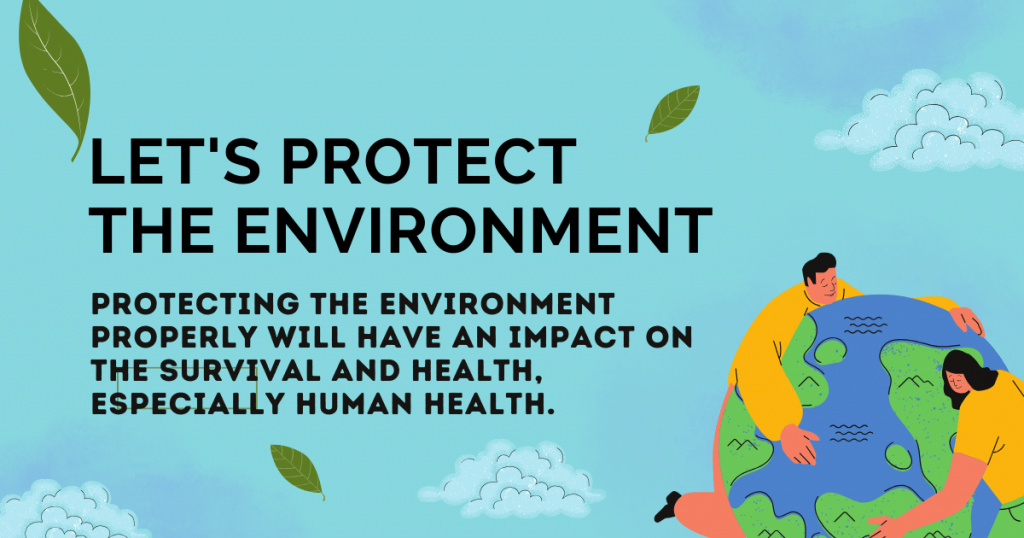Environmental Concerns
Environmental concern refers to the various issues and challenges affecting the natural world and the delicate balance of ecosystems that support life on our planet. These problems are caused by human activities such as industrialization, urbanization, deforestation, and burning fossil fuels that release harmful gases into the atmosphere.
One of the most pressing environmental problems facing the world today is climate change, which is caused by the emission of greenhouse gases that trap heat in the Earth’s atmosphere and lead to rising temperatures, melting glaciers, and rising sea levels. Another major environmental problem is air pollution, caused by burning fossil fuels, transportation, and industrial activities that release particulate matter, nitrogen oxides, and other harmful substances into the air, leading to respiratory problems and other health issues. Water pollution is also a major environmental problem caused by the discharge of industrial and household waste, agricultural runoff, and oil spills that contaminate rivers, lakes, and oceans and harm aquatic life and human health.
Deforestation and desertification are also significant environmental problems, leading to biodiversity loss, soil erosion, and climate change. Depleting natural resources such as fossil fuels, minerals, and forests is another major environmental problem, as it destroys ecosystems, loss of biodiversity, and the depletion of resources essential for human survival. Addressing these environmental problems requires collective action and a commitment to sustainable development that balances economic growth with environmental protection and social equity.
Table of Contents
1- Pollution
Pollution is a major environmental problem caused by the release of harmful substances, such as air, water, and soil. It is one of the world’s leading environmental problems today, with its harmful effects being felt by humans and other living organisms. Pollution is caused by human activities such as industrialization, transportation, agriculture, and natural disasters like wildfires and volcanic eruptions.
Air pollution
It is caused by the emission of pollutants from industries, vehicles, and the burning of fossil fuels. It is a significant problem that affects human health, causing respiratory problems and cardiovascular diseases. It also contributes to climate change, rising temperatures, and extreme weather events.
Water pollution
Another major problem is the discharge of untreated sewage, industrial waste, and agricultural runoff into water bodies, destroying aquatic life and posing health risks to humans who consume contaminated water.
Soil pollution
It is caused by the release of chemicals and hazardous waste into the soil, leading to the loss of fertile land and posing health risks to humans who consume contaminated crops and animals that feed on polluted plants.
It is a leading environmental problem that requires collective action to address. Governments, industries, and individuals all have a role in reducing pollution by implementing strict environmental regulations, promoting clean technologies, and adopting sustainable practices that reduce waste and emissions. By addressing pollution, we can protect the environment and ensure a healthy future for future generations.
2- Global Warming

Global warming is a leading environmental concern that refers to the gradual increase in the Earth’s surface temperature caused by human activities, primarily burning fossil fuels, deforestation, and industrialization. The increase in global temperatures has far-reaching impacts on the environment, causing changes in weather patterns, rising sea levels, melting of glaciers and ice caps, and shifts in ecosystems and wildlife populations.
One of the most significant impacts of global warming is climate change, which leads to extreme weather events such as heatwaves, hurricanes, and droughts, affecting human health, agriculture, and infrastructure. Rising sea levels, caused by melting ice caps and glaciers, threaten coastal communities, leading to flooding and displacement.
The loss of biodiversity is another significant impact of global warming. Climate change disrupts ecosystems, leading to the loss of habitats for plants and animals, and increases the risk of extinction for many species. The Arctic region, for example, is experiencing rapid changes due to global warming, leading to the loss of habitat for animals such as polar bears and walruses.
Addressing global warming requires collective action from governments, industries, and individuals. Reducing greenhouse gas emissions through measures such as renewable energy and energy efficiency, promoting sustainable land use practices, and preserving forests and other natural habitats can all contribute to mitigating the effects of global warming. Reducing global warming can protect the environment, safeguard human health, and ensure a sustainable future for future generations.
3- Overpopulation

Overpopulation is a leading environmental concern that refers to where the number of people living in a particular area exceeds the environment’s capacity to support them sustainably. Overpopulation leads to various environmental problems, including land degradation, deforestation, pollution, and biodiversity loss.
As the global population continues to grow, it puts pressure on natural resources such as land, water, and food, leading to the depletion of these resources and causing environmental problems. For example, deforestation is often driven by the need to clear land for agriculture or urbanization, leading to the loss of wildlife habitats, soil erosion, and carbon emissions.
Overpopulation also contributes to pollution, as more people generate more waste, consume more resources, and use more energy, increasing air and water pollution levels. The increased demand for energy and transportation also leads to higher greenhouse gas emissions, contributing to climate change.
To address the problem of overpopulation, countries need to implement policies and strategies that promote sustainable population growth. This can include measures such as family planning and reproductive health education, promoting sustainable land use practices, and implementing policies that encourage the development of sustainable cities and communities.
Overpopulation is a significant environmental concern that requires action to ensure a sustainable future for our planet. By addressing the root causes of overpopulation and taking action to promote sustainable practices, we can protect the environment, safeguard human health, and ensure a healthy future for generations to come.
4- Natural Resource Depletion
Natural resource depletion is a leading environmental concern that refers to losing natural resources due to human activities, such as minerals, fossil fuels, forests, and water. The overuse and exploitation of these resources pose significant environmental threats, leading to soil erosion, water pollution, loss of biodiversity, and climate change.
One of the most significant natural resources facing depletion is fossil fuels. Burning fossil fuels for energy production leads to the release of greenhouse gases, contributing to climate change. The extraction of fossil fuels, such as oil and coal, can also lead to environmental damage through oil spills, land degradation, and pollution of water bodies.
Forests are another critical natural resource facing depletion due to deforestation, often driven by agricultural expansion, urbanization, and illegal logging. Deforestation leads to soil erosion, loss of wildlife habitat, and reduced carbon sequestration, leading to climate change.
Water scarcity is another significant environmental concern caused by the depletion of natural resources. Overuse and pollution of water resources and changes in weather patterns due to climate change can lead to water scarcity, affecting agriculture, human health, and ecosystems.
To address the problem of natural resource depletion, countries must adopt sustainable practices that promote the conservation and efficient use of natural resources. This can include measures such as the promotion of renewable energy, the implementation of sustainable land use practices, and the conservation of forests and water resources.
In conclusion, natural resource depletion is a significant environmental concern that requires urgent action. By adopting sustainable practices that promote the conservation and efficient use of natural resources, we can protect the environment, safeguard human health, and ensure a sustainable future for future generations.
5- Deforestation
Deforestation is a leading environmental concern that refers to removing forests and trees from a specific area for commercial or subsistence purposes. Deforestation significantly impacts the environment, including biodiversity loss, soil erosion, water cycle disruption, and climate change.
Forests play a critical role in the environment by providing wildlife habitats and helping to regulate the Earth’s climate. Deforestation contributes to climate change by releasing large amounts of carbon dioxide into the atmosphere. Trees absorb carbon dioxide during photosynthesis, helping to regulate the planet’s carbon cycle. When trees are cut down or burned, the stored carbon is released, contributing to greenhouse gas emissions.
Deforestation also leads to soil erosion, which can affect the fertility and health of the soil. Trees and their roots help to hold soil in place, preventing soil erosion and ensuring that nutrients remain in the soil. When trees are removed, the soil becomes exposed to the elements, leading to erosion and making it difficult for crops to grow.
Deforestation also contributes to biodiversity loss, as many animal and plant species rely on forests for their habitats. Deforestation leads to habitat destruction and fragmentation, leading to biodiversity loss.
To address the problem of deforestation, countries need to implement policies and strategies that promote sustainable land use practices. This can include measures such as the promotion of sustainable forestry, the implementation of reforestation projects, and the protection of forested areas. Additionally, consumers can play a role by supporting sustainably produced products, such as timber and paper, and reducing their overall consumption of products contributing to deforestation.
In conclusion, deforestation is a significant environmental concern that requires urgent action. By promoting sustainable land use practices and protecting forests, we can safeguard the environment, protect biodiversity, and ensure a sustainable future for future generations.
6- Waste Disposal
Waste disposal is an environmental concept that refers to the improper handling, disposal, and management of waste materials. The improper disposal of waste significantly impacts the environment, including water and air pollution, soil contamination, and the depletion of natural resources.
One of the primary issues with waste disposal is the production of hazardous waste materials, such as toxic chemicals and electronic waste. These materials can cause significant harm to the environment and human health if not disposed of properly. The improper disposal of hazardous waste can lead to water and soil contamination, which can have long-term effects on the environment and human health.
In addition to hazardous waste, the improper disposal of non-hazardous waste, such as plastics and organic waste, can have significant environmental impacts. Plastics take hundreds of years to decompose, accumulating plastic waste in landfills and oceans, affecting wildlife and their habitats. Organic waste can also cause significant environmental problems, as it can lead to the production of methane, a potent greenhouse gas that contributes to climate change.
To address the waste disposal problem, countries must implement policies and strategies promoting sustainable waste management practices. This can include measures such as the promotion of waste reduction, the implementation of recycling programs, and the development of sustainable waste disposal facilities.
Individuals can also play a role in reducing waste by practicing responsible consumption and disposal habits, such as reducing their overall consumption of single-use plastics, separating recyclable materials, and composting organic waste.
In conclusion, waste disposal is a significant environmental concern that requires urgent action. Promoting sustainable waste management practices and reducing waste can protect the environment, safeguard human health, and ensure a sustainable future for future generations.
7- Acid Rain
Acid rain is an environmental concern that refers to the deposition of acidic substances in the atmosphere, leading to the acidification of water bodies, soil, and vegetation. Acid rain is primarily caused by the emission of sulfur dioxide (SO2) and nitrogen oxides (NOx) from burning fossil fuels and industrial activities.
When SO2 and NOx are released into the atmosphere, they react with water, oxygen, and other chemicals to form sulfuric acid and nitric acid. These acids then fall to the ground in acid rain, snow, or fog, acidifying soil, water, and vegetation.
The effects of acid rain on the environment can be significant, including damage to crops, forests, and aquatic ecosystems. Acid rain can also lead to the corrosion of buildings, monuments, and infrastructure.
In aquatic ecosystems, acid rain can lead to the acidification of water bodies, affecting aquatic life and reducing biodiversity. Acidification can also release toxic metals from sediments, harming aquatic life.
To address the problem of acid rain, countries have implemented policies and regulations aimed at reducing the emissions of SO2 and NOx. These policies include using clean energy sources, such as renewable energy, and implementing technologies to reduce emissions from industrial activities.
In conclusion, acid rain is a significant environmental concern that requires urgent action. By reducing emissions of SO2 and NOx and promoting sustainable energy practices, we can protect the environment, safeguard human health, and ensure a sustainable future for future generations.
8- Natural Disasters
Natural disasters are an environmental problem that refers to extreme weather events, geological events, or other natural phenomena that cause significant damage to the environment and human society. Examples of natural disasters include hurricanes, earthquakes, floods, landslides, wildfires, and volcanic eruptions.
Natural disasters can have significant environmental impacts, including damage to ecosystems, the destruction of habitats, and the loss of biodiversity. For example, wildfires can destroy large areas of forests, leading to the loss of habitats for wildlife and contributing to climate change by releasing large amounts of carbon dioxide into the atmosphere. Floods can lead to soil erosion, damage to infrastructure, and the loss of crops.
Natural disasters also have significant social and economic impacts, including the loss of human life, displacement of populations, and damage to infrastructure and property. These impacts can be especially severe in developing countries, where resources and infrastructure are often limited.
To address the impacts of natural disasters, countries must implement policies and strategies promoting disaster risk reduction and management. This can include measures such as implementing early warning systems, developing evacuation plans, and implementing building codes and infrastructure designed to withstand natural disasters.
Additionally, efforts to mitigate and adapt to the impacts of climate change can help reduce the frequency and severity of natural disasters. This can include the reduction of greenhouse gas emissions, the promotion of sustainable land use practices, and the development of climate-resilient infrastructure.
Natural disasters are a significant environmental concern that requires urgent action. By promoting disaster risk reduction and management and addressing the underlying causes of natural disasters, we can protect the environment, safeguard human life and livelihoods, and ensure a sustainable future for future generations.
9- Loss of Biodiversity
Biodiversity loss is an environmental problem that refers to the loss of species, genetic diversity, and ecosystems on Earth. Biodiversity is essential for the functioning of ecosystems and provides various benefits to human society, including food, medicine, and cultural values.
Human activities, including deforestation, habitat destruction, pollution, climate change, overfishing, and the introduction of invasive species, primarily cause biodiversity loss. These activities have led to numerous species’ extinction and ecosystems‘ degradation, significantly impacting the environment and human society.
Biodiversity loss can lead to the collapse of ecosystems, including the loss of pollinators, soil fertility, and water quality. It can also lead to the loss of genetic diversity, essential for maintaining species’ resilience to changing environmental conditions.
The loss of biodiversity can also have significant social and economic impacts, including the loss of livelihoods and income for communities that rely on biodiversity for food, medicine, and other resources.
To address the problem of biodiversity loss, countries need to implement policies and strategies that promote biodiversity conservation and sustainable use. This can include measures such as the creation of protected areas, the restoration of degraded ecosystems, and the promotion of sustainable land use practices.
Individuals can also play a role in reducing biodiversity loss by practicing responsible consumption and disposal habits, supporting sustainable agricultural practices, and reducing their environmental impact.
In conclusion, biodiversity loss is a significant environmental concern that requires urgent action. Promoting biodiversity conservation and sustainable use can protect the environment, safeguard human health and livelihoods, and ensure a sustainable future for future generations.
10- Urban Sprawl
Urban sprawl is an environmental problem that refers to the spread of urban development into previously undeveloped areas, often resulting in the loss of natural habitats, increased air and water pollution, and increased traffic congestion.
Urban sprawl is primarily caused by population growth, changes in land use policies, and the availability of transportation infrastructure, which encourages the expansion of urban areas. The expansion of urban areas can have significant environmental impacts, including the loss of natural habitats, which can lead to the loss of biodiversity and ecosystem services.
Urban sprawl also contributes to increased air and water pollution and traffic congestion, increasing greenhouse gas emissions and decreased air quality. Additionally, urban sprawl can contribute to the heat island effect, where urban areas are significantly warmer than surrounding areas due to the absorption and re-radiation of heat from buildings and paved surfaces.
To address the problem of urban sprawl, cities need to implement policies and strategies that promote sustainable urban development, including smart growth and compact development strategies. This can include measures such as the development of public transportation infrastructure, the creation of green spaces and parks, and the implementation of zoning regulations to encourage mixed-use development and the preservation of natural habitats.
Individuals can also play a role in reducing urban sprawl by practicing responsible consumption habits and supporting sustainable land use practices, such as purchasing products from sustainable sources and supporting local agriculture.
Urban sprawl is a significant environmental concern that requires urgent action. Promoting sustainable urban development can protect the environment, safeguard human health and well-being, and ensure a sustainable future for future generations.





